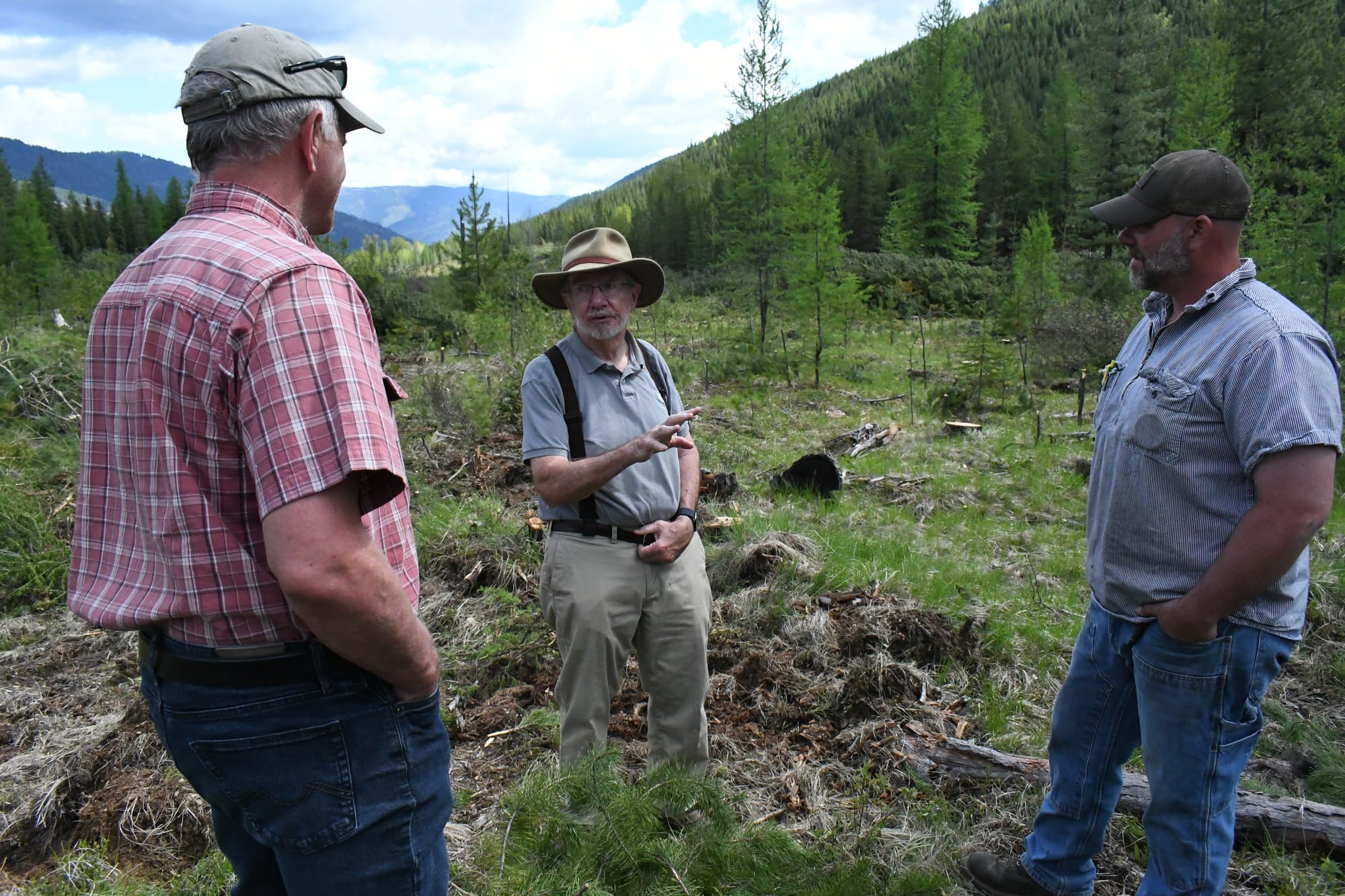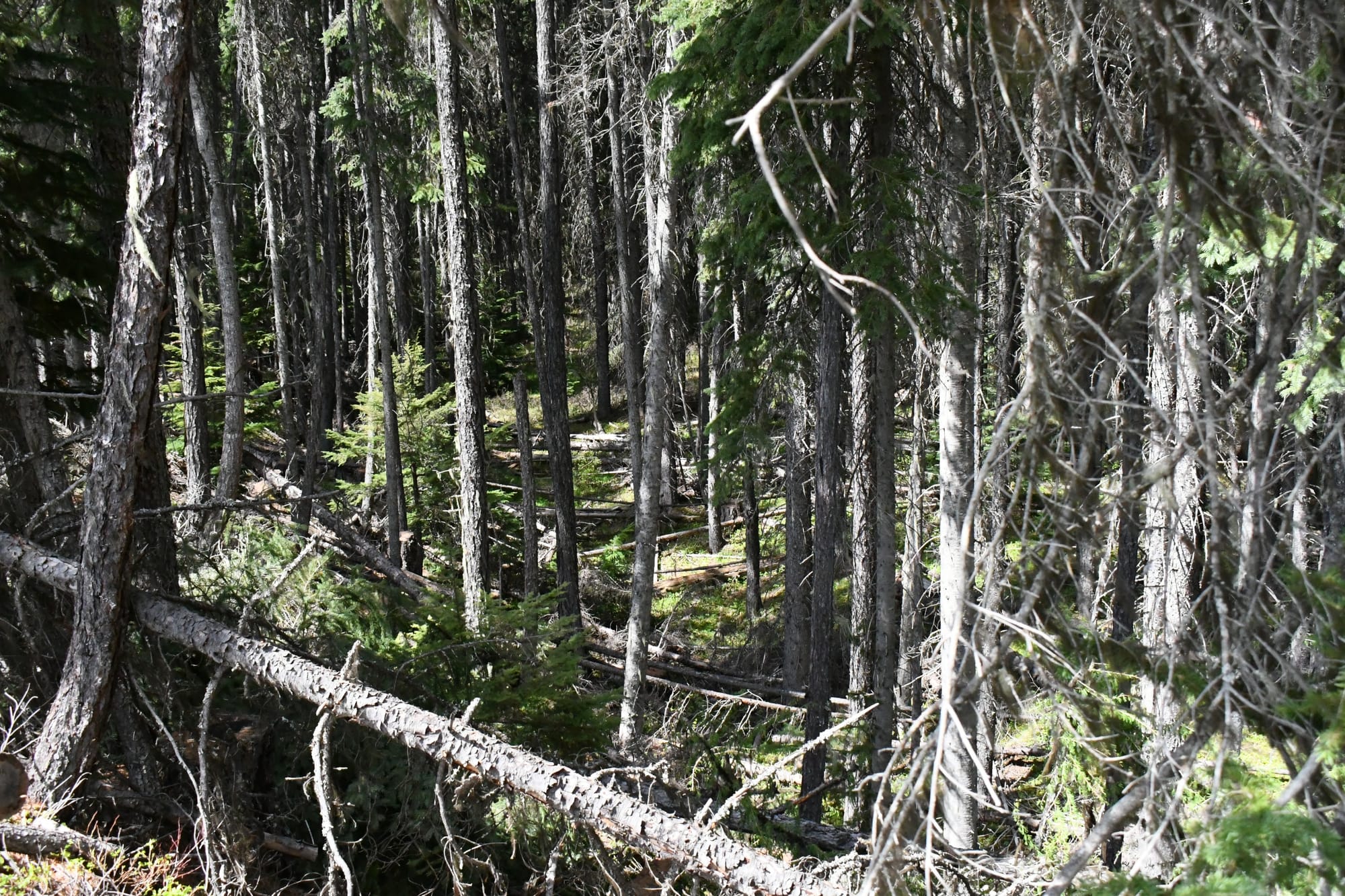The Work Ahead
As we begin the new year, we want to share what Evergreen is focused on — and what it will take

Chad Oliver, PhD silviculturist and preeminent Forest Stand Dynamics scientist after touring Chas Vincent’s grizzly habitat restoration project on Hecla Mining Company forestland in Northwest Montana, May 14, 2024
Julia and I were in Northwest Montana May 13-17 touring and photographing our grizzly habitat restoration project on Hecla Mining Company forestland southeast and southwest of Libby.
Evergreen is collaborating with several organizations including the U.S. Fish and Wildlife Service, the U.S. Forest Service and its Rocky Mountain Research Station, Montana Fish, Wildlife and Parks, the Montana Depart

The on-the-ground adaptive forestry work is being done by Chas Vincent, a Libby native who describes himself as “a recovering politician.” He was a Montana House and Senate leader for many years and is a fourth generation logger.
We were accompanied by two long-time friends, Chad Oliver, a PhD silviculturist and Yale University professor emeritus and Larry Mason, an Oliver protégé and former research scientist at the University of Washington. We had not seen them since the early 1990s.
Bruce Vincent, President of the Libby Area Chamber of Commerce and Evergreen Foundation Treasurer, assembled the tour and his wife and business partner, PJ, took care of all of our eats including breakfasts, lunches and two dinners.
Chad Oliver and Bruce Larson, PhD, University of British Columbia, co-wrote Forest Stand Dynamics in 1996, a forest management concept pioneered in the 1940s by the late David Smith who was Oliver's major professor at Yale. Oliver's stand dynamics research has taken him to 26 countries on six continents.
Stand dynamics forms the the basis for the adaptive forest management treatments Chas Vincent is creating in Hecla’s forests. They are advising Chas on the safest and most reliable ways to thin dense forests to allow the sun to warm soils in which new grizzly food sources will sprout naturally or be planted.
On the second day of our tour, we were accompanied by Forest Service Region 1 Regional Forester, Leanne Marten, Kootenai National Forest Supervisor, Chad Benson, and several members of their staffs.
Our hope is that these Hecla thinning treatments can be tested on the Kootenai National Forest in areas where there are no food sources for the area’s augmented grizzly population. At ground level, what we have here is a botany project designed to increase plant diversity in openings that will attract more birds and wildlife.
The purpose of our Day 2 tour was to demonstrate the process of hanging trail cameras that will detect any travel or foraging by grizzly bears. The correct process for hanging the cameras was demonstrated by Tavis Forrester, a PhD wildlife biologist with the Rocky Mountain Research Station [USFS] in Missoula.
Forrester trained several Vincent Logging crew members who will hang 40 Browning trail cameras on the tract, southwest of Libby overlooking the Bull River Valley and the Cabinet-Yaak Mountains. The cameras have a battery life of six months and can see and record in color for about 25 yards. Images are recorded on a sim card identical to those used in digital cameras.

Large swaths of this tract hold western white pine trees believed to have been planted by the J. Neils Lumber Company Elsewhere, there are dense thickets of lodgepole that are among the fuels removed for both fire resilience and potential forage development after trail camera data is analyzed by Forrester. Possibly sometime next year.
Up next, we conducted an extensive post-tour interview with Oliver. He flew to Seattle to visit his daughter following our tours but he was kind enough to write a short follow-up assessment based on his observations concerning the ecological and cultural impacts that evolving federal regulatory policies pose for public and private forest landowners.
We share Oliver's belief that the principles of forest stand dynamics and adaptive forest management can be successfully integrated in our grizzly project.

You 100% tax-deductible subscription allows us to continue providing science-based forestry information with the goal of ensuring healthy forests forever.